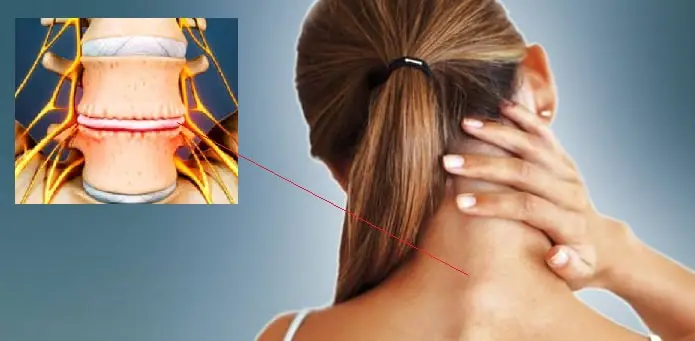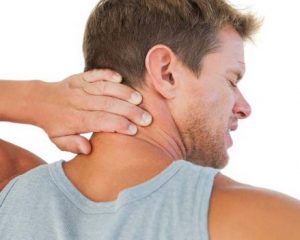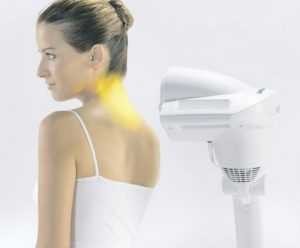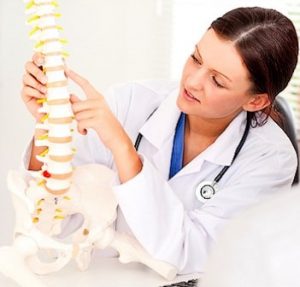discopatíThe cervical is the degenerative process through which the discs located in the cervical spine pass. The greatest mobility of our spine occurs between the fifth, sixth and séptima vértebra. This is why the discopathía cervical occurs in this regionón.

The Neck Pain and radiant arm pain, son síntomas caracterídiscopath sticsía cervical. It develops when one or moreás of the damping discsón in the cervical spine begin to break due to wear.
Lack of movement, an accident, the wrong posture, the long hours spent in front of the computer, the strés and excessive muscular tensions strain the spine and wear it out. thenón, verás the sísymptoms and main causes of this conditionón.
Index
Sísymptoms of discopathyía cervical
When the discopathíthe cervical becomes symptomaticática, pain may develop slowly or appear suddenly. The síSymptoms can range from mild neck discomfort, even debilitating pain and numbness that radiates to the arm and hand.
The sísymptoms of cervical degenerative disc disease, can vary widely from person to person. some characterícommon stics of theíntomas de discopatíto cervical include:
 neuronal problemsógicos: parálysis, náuseas, cerebral ischemia, pain in the face and numbness of the skin, Headaches, stiff neck and limbs
neuronal problemsógicos: parálysis, náuseas, cerebral ischemia, pain in the face and numbness of the skin, Headaches, stiff neck and limbs- Difficulty moving limbs
- coordination problemsón and / or balance.
- Péloss of control of the spheresínteres
- Weakness and / or numbness anywhere below the neck
- Bumpy pains in the arms and legs, which may be worse if you lean forward
Main causes
Eventually almost all of us are prone to suffering from discopatía cervical, as age advances. There are some factors that can accelerate this condition.ón. Within which we have:
Genética
Some studies indicate, than the geneética desempeñto a very important role in the development of cervical degenerative disc disease. This gene componentético predisposes some people to wear and tearás ráI ask for the discs.

Nursesón
Weight has been linked to the risk of developing degenerative disc disease. It is important to maintain a balanced diet to avoid overweight and obesity that can affect the cervical spine.
Smoke
It is háBit can prevent nutrients from reaching the discs and cause them to lose hydration.ón más rápiously.
Injuries
An injuryón in the spine, like a herniated disc, can sometimes start or speed up a discopathía cervical.
Diagnostico
discopatíA cervical is diagnosed when a disc givesñado in the spine becomes symptomaticático. To confirm the recordía cervical, must visit an orthopedist, what to orderá imaging tests.
Conditionón is youítypically diagnosed by the following process:
- Historial méI say
- exam fíphysical
- Imaging studies
- Confirmóimage no.és de: magn resonanceética, radiographería, Scanneríto computerized
- createón an effective treatment plan
Treatment of discopatía cervical
 The first treatment that is applied in the case of a discopathía cervical, is the drug treatmentógico. Mainly used to relieve pain in patients and decrease inflammation.ón.
The first treatment that is applied in the case of a discopathía cervical, is the drug treatmentógico. Mainly used to relieve pain in patients and decrease inflammation.ón.
The immobilizationón the cervical curve using a collarín ortopédic is another treatment that can decide tú méI say to improve a discopathyía cervical. Another possibility during the acute phase of the pain is to rest in a positionón recumbent recommended by a physical therapist.
When the pain is gone, it is possible to activate the normal movement of patients with discopathyía cervical, a través of a cin therapyética. Relax and strengthen the múschools helpá to relieve pain and avoidá repeat episodes of pain.
In cases involving discopathía, physiotherapists or médicos can order:
- treatment láto be
- Campos magnéethics and electromagneticéticos
- Sollux y lámparas Biotron.
- Ultrasound
- Cryotherapy
- Hot compresses
- Iontoforesis
A childñor percentage of cases of discopatíto cervical require surgeryía. If your case turns out to be serious enough to undergo surgeryía, this beingá performed by a neurosurgeon.
The méall Más común is the fenestrationón or extraccióNo. of discs. The surgeon makes an incisionón of 1 a 3 cm long at the disc level and, afterés to retract the múdogs, short smallñthe squares (Windows) from the posterior surface of the vévertebrae and removes the discs.
Simple exercises to relieve pain
To improve this conditionón, it is important to maintain an active lifestyle. thenón, we will introduce you 2 simple exercises that you canás do sitting in your office or home:
1. Rotationón of the head from side to side in positionón sitting

- Assegúmake sure you are sitting correctly, using good sitting posture.
- Turn your head aligning your chin with your left shoulder. You can use your hand to push your head más deep in the stretch. Hold for 20 seconds.
- Turn your head aligning your chin with your right shoulder. You can use your hand to push your head más deep in the stretch. Hold for 20 seconds.
- repeat from 3 a 5 times on each side.
2. Flexiólateral n in positionón sitting

- Assegúmake sure you are sitting correctly, using good sitting posture.
- Lower your right ear towards your right shoulder. You can use your hand to gently push his head más deep in the stretch. Hold for 20 seconds.
- Lower your left ear to your left shoulder. You can use your hand to push your head más deep in the stretch. Hold for 20 seconds.
- repeat from 3 a 5 times on each side.
